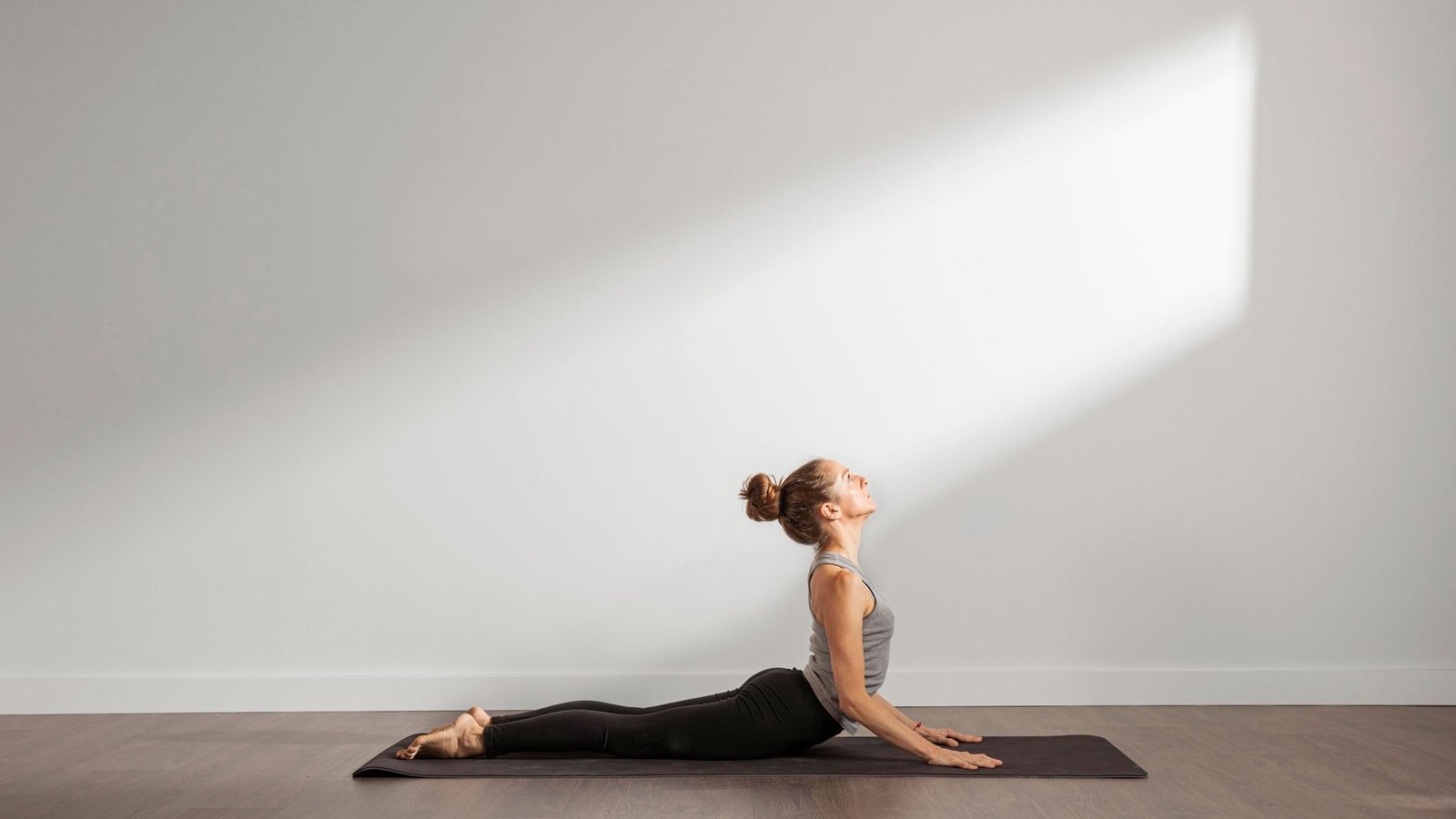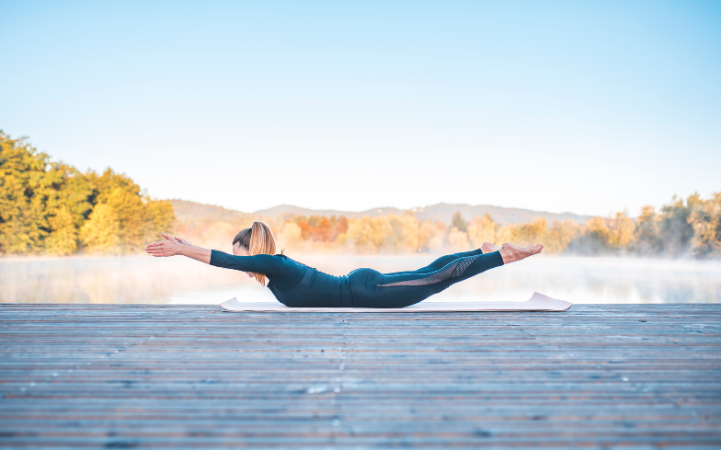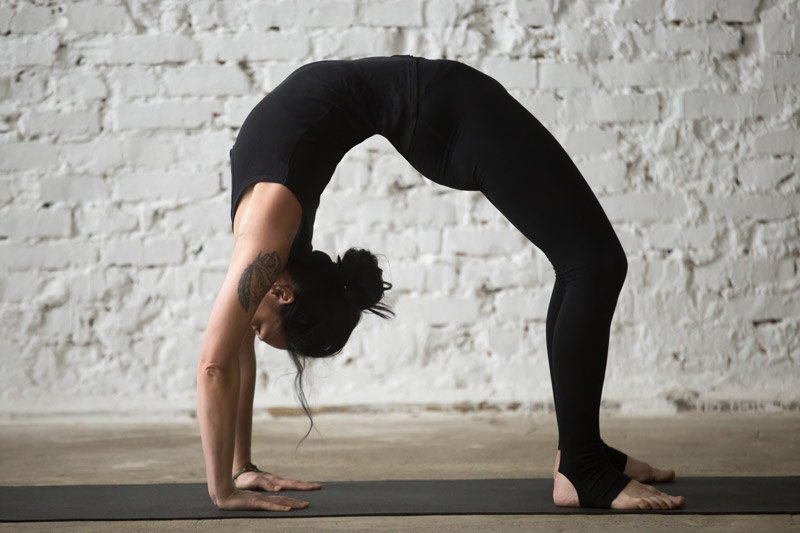Viparita Karani, commonly known as “Legs-Up-the-Wall Pose,” is a gentle inversion that offers a wealth of therapeutic benefits. The Sanskrit term Viparita means “inverted” and Karani means “action” or “process,” reflecting the pose’s reversal of normal body posture. Unlike intense inversions like headstands or shoulder stands, Viparita Karani is accessible to most practitioners and is often used for relaxation, recovery, and restoration.
Though it looks simple, this posture has a powerful impact on the nervous, circulatory, and endocrine systems. It’s a favorite among yoga practitioners for its calming effects and its ability to relieve fatigue, anxiety, and tension.
Steps to Perform Viparita Karani
Choose a Comfortable Space: Find a wall and place a folded blanket, bolster, or cushion a few inches away from it.
Sit Sideways to the Wall: Sit with one hip touching the wall and legs bent, facing outward.
Swing Your Legs Up: Gently lower your back onto the floor while swinging your legs up the wall. Your hips should rest on the support, and your back should be flat on the floor.
Adjust Your Position: Your sit bones can be close to the wall or a few inches away, depending on your comfort and flexibility. Keep your legs straight up and relaxed.
Arm Position: Rest your arms at your sides, palms facing up, or place them on your belly for a grounding effect.
Close Your Eyes and Breathe: Stay in this position for 5–15 minutes, breathing deeply and letting go of tension.
To Exit: Bend your knees and roll to one side, using your hands to press up into a seated position slowly.
Benefits of Viparita Karani
Relieves Tired Legs and Feet: This inversion encourages blood flow from the lower body back toward the heart, easing fatigue, swelling, and tension in the legs and feet.
Improves Circulation: Reversing gravity helps improve venous return and supports lymphatic drainage.
Soothes the Nervous System: The pose triggers the parasympathetic nervous system, reducing stress, anxiety, and insomnia.
Aids Digestion: Gently compresses the abdominal organs, stimulating digestion and relieving bloating.
Reduces Varicose Veins: Consistent practice may alleviate discomfort associated with varicose veins by reducing pressure in the legs.
Balances Hormones: The gentle inversion affects endocrine function, potentially supporting hormonal balance in both men and women.
Eases Menstrual Discomfort: This pose is often recommended for women to relieve mild cramps and pelvic tension.
Tips for Practicing Viparita Karani
Use Props: A bolster or folded blanket under the hips adds comfort and enhances the pose’s benefits.
Warm Environment: Ensure the space is quiet and warm to fully relax into the posture.
Support the Neck: Place a small towel or cushion under the neck if needed for comfort.
Close the Eyes: Use an eye pillow or soft cloth to block out light and deepen relaxation.
Consistency Matters: Practicing regularly, even for 10 minutes a day, can yield significant long-term benefits.
Cautions and Contraindications
Glaucoma or Eye Pressure Issues: This inversion may increase intraocular pressure and should be avoided without medical guidance.
Serious Neck or Back Problems: Individuals with spinal injuries or chronic back pain should consult a healthcare provider or experienced yoga teacher.
Pregnancy: Pregnant women should avoid or modify this pose based on guidance from a prenatal yoga instructor.
Menstruation: Some traditional schools discourage inversions during menstruation; practitioners should follow what feels right for their body.
High Blood Pressure: While often calming, those with hypertension should check with a doctor before practicing.
Viparita Karani is a deeply nourishing posture that offers rest, rejuvenation, and a break from the constant pull of gravity. Ideal for nearly all levels and body types, it provides a sanctuary of stillness in a busy world. Whether used to wind down after a long day or as part of a restorative yoga practice, this gentle inversion is a powerful tool for cultivating balance, inner peace, and physical recovery.






